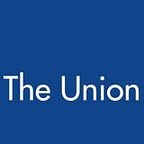Tobacco Tax: The most effective least-used tool in public health
By Johanna Dollerson
The World Health Organization’s new 2017 Report on the Global Tobacco Epidemic proposes increasing tobacco tax as ‘the most plausible way’ for low- and middle-income countries to significantly reduce non-communicable diseases — the leading cause of premature death and disability worldwide. Non-communicable diseases — NCDs, for short-hand — include cancers, heart disease, strokes, diabetes and chronic lung diseases. They kill more than 39.5 million people each year — a figure that is rising steadily.
The world’s poorest nations bear a disproportionate burden. In 2015 more than three-quarters of the lives cut short by NCDs were in lower-income countries. As tobacco use is the leading risk factor for NCDs, tobacco tax policies are the most effective tool countries have for reducing these diseases at the population level.
The World Health Organization’s Framework Convention on Tobacco Control is a legally binding health treaty involving 180 countries. And it provides governments clear guidelines for tobacco tax policies proven to reduce tobacco use.
Higher taxes on tobacco have proven to be the most effective measure for both encouraging smokers to quit and preventing others from taking up smoking — especially young people. After South Africa increased tobacco tax rates fell by 255 percent in real terms between 1991 and 2001, total cigarette consumption fell by 34 percent, while per-capita consumption fell by more than 40 percent.
A growing number of countries with high rates of smoking are also strategically using the increased revenue from higher tobacco taxes to invest in public health programmes or universal health care — an approach championed by leaders in finance and development. Thailand was one of the first to adopt this approach, and several other countries are in the process of developing their own models.
Considering the benefits, one would imagine that most countries would now be taking hold of the opportunities offered by tobacco taxes — to reduce disease and premature death on the one hand, while simultaneously increasing funding for health care on the other.
In reality, in 2016 just 32 countries — 18 percent of all Parties to the tobacco treaty — had a tobacco tax policy that met WHO recommendations for best-practice. And this number has dropped since 2014. Although tobacco tax is proven to be the most effective policy for reducing tobacco use, it is the least well implemented.
Why is this?
Public health experts and economists have identified several reasons.
First, responsibility for tobacco control remains largely within the remit of health ministries, and health ministers do not set tax rates. Although finance ministry officials may be aware of the tobacco treaty, they often don’t understand their country’s obligations under the treaty.
At the same time, health ministry officials may not have the specialised knowledge of tax policy issues — or a grasp even of the relevant language — needed to work effectively with their finance ministry counterparts.
Dr. Hana Ross, Principal Research Officer of the Economics of Tobacco Control Project at the University of Cape Town, says she comes across this issue all the time. “Governments that are Party to the WHO FCTC are legally bound to implement the treaty’s measures. Even though this falls into the domain of health ministries, they are seldom equipped with the knowledge or vocabulary to hold technical discussions on tax with ministries of finance.”
Meanwhile, even though the tobacco treaty is legally binding, there are no repercussions for failing to follow its policy recommendations.
The tobacco industry adds further obstacles. Traditionally their closest government links are with finance ministries. Several governments, including China, Indonesia and Thailand, even have direct ownership of the tobacco industry in their countries.
Taking a purely revenue-based perspective, when compared to other forms of taxation the revenues generated from tobacco tax are in some cases too negligible for government finance experts to bother. But this view is narrow.
Consider this example: at present many African countries have comparatively low rates of tobacco use, so the tobacco-tax base would be small. But the region is now being aggressively targeted by the tobacco industry as a market with significant growth potential. So while higher tobacco taxes may not increase revenues by much in those countries, as a public health tool it would help prevent the escalation of tobacco use — and its devastating health and economic consequences.
If countries across the region agree to implement tobacco taxes, the impact could be significant.
High level political leadership will be key to advancing tobacco taxation. As Dr. Ross says, “When a prime minister or president recognizes that the main role of tobacco tax is to improve public health rather than reaching a specific revenue target, then there is a platform to build an effective tobacco tax policy, engaging both health and finance ministries.”
Ministries of health also need more support to effectively engage with ministries of finance. Academia and civil society have an important role to play here, providing expert technical advice and evidence and helping build capacity.
The public too must get involved. Proactive and vocal support for higher taxes on tobacco will help motivate governments to shift their thinking — from a revenue-based approach to tobacco taxation, to one that champions public health first and foremost.
Johanna Dollerson is Communications Officer in the Department of Tobacco Control, International Union Against Tuberculosis and Lung Disease.
